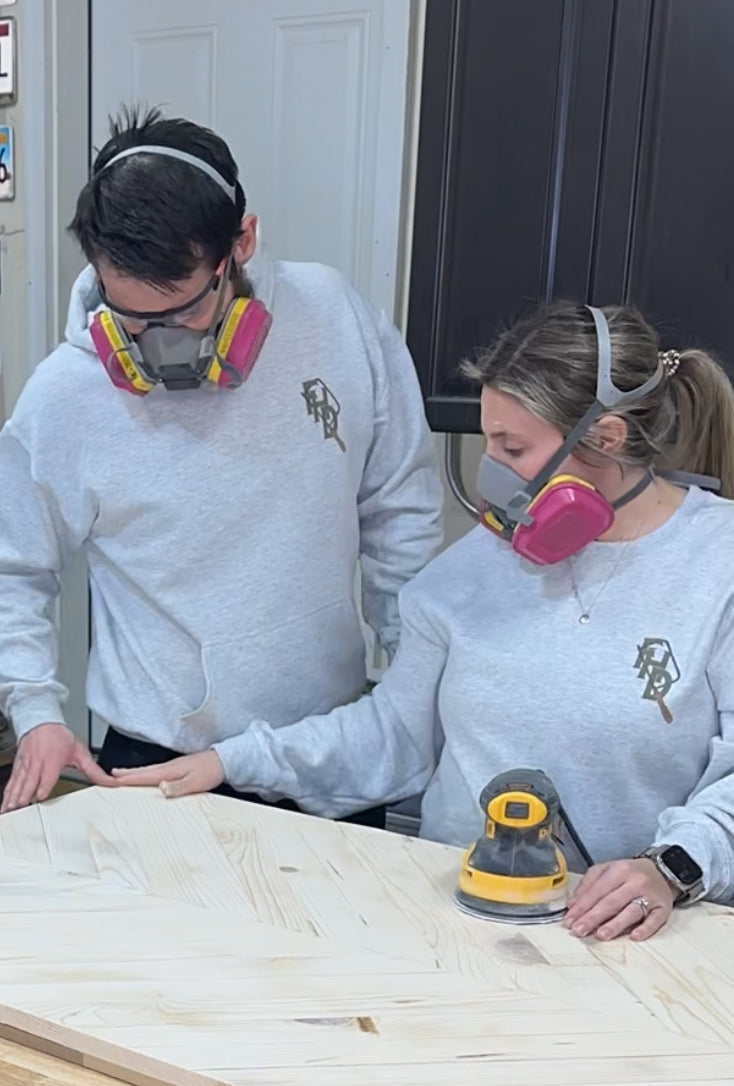
Discover The Art Of Evolution In Woodworking: Crafting New Pieces With Passion
Share
Discover The Art Of Evolution In Woodworking: Crafting New Pieces With Passion
Did you know that woodworking is not only a craft but an evolving art form that intertwines creativity and functionality? Crafting individual pieces from wood allows you to express your artistic vision while contributing to sustainability by utilizing natural materials. At Farmhouse Day's Woodworking, we recognize that staying at the forefront of the woodworking craft requires continual learning, experimentation, and evolution. This post will take you on a journey through the essentials of creating new pieces in woodworking, the techniques that developers use, and how to stay innovative while mastering your skills. Join us as we explore how to cultivate your woodworking craft and build a thriving practice!
Woodworking is an ancient craft that has stood the test of time, evolving through centuries of innovation and creativity. It provides opportunities for personal expression, sustainability, and functionality. Whether you are a seasoned artisan or a hobbyist looking to improve your skills, this guide will equip you with the necessary tools, techniques, and inspiration to craft new pieces and advance your woodworking journey.
Understanding the Basics of Woodworking
Before diving into the art of creating new pieces, it's crucial to have a solid understanding of the essential concepts that shape the craft. The approach you take, the materials you select, and the design philosophies you adopt can significantly affect the outcome of your projects.
-
Crafting Concepts: Don't just focus on tools; immerse yourself in basic design principles that inform your woodworking. Think about proportion, balance, and consistency in your designs. Understanding these concepts will enhance your work.
-
Material Knowledge: Wood varies widely in terms of grain, density, color, and workability. Familiarize yourself with different woods like oak, cherry, and walnut. By immersing yourself in material knowledge, you’ll make more informed choices about how to manipulate each type accordingly.
-
Enhancing Wood Characteristics: Paying attention to how grain patterns can highlight the beauty of each piece is essential. Finishing techniques should elevate the natural aesthetics, ensuring that each piece tells a unique story.
Design Techniques for Crafting New Pieces
When embarking on creating new pieces, design plays a significant role. Below are methods that can encourage creativity and innovation in your woodworking endeavors:
-
Sketching Your Ideas: Always start with sketches. Visualizing your ideas helps clarify your vision and serves as a guide throughout the project, enhancing your ability to evolve creatively.
-
Creating Prototypes: Before crafting your final piece, build a prototype. Prototyping helps you explore construction methods and dimensions. It builds confidence, allowing you to understand what will work and what should evolve.
-
Incorporating Mixed Media: Experimenting is crucial in evolving woodwork. Consider integrating other materials like metal or glass to create unique pieces. Such pieces can enhance both aesthetic and functional value, showcasing your innovative skills.
Techniques to Evolve Your Woodworking Skills
Developing your skills and staying innovative in woodworking is an ongoing journey. Here are some techniques that can help you evolve:
-
Educational Workshops: Workshops present opportunities to learn from experienced woodworkers. They provide hands-on tips and insights into modern design trends, helping you evolve your craft.
-
Online Communities: The online woodworking community offers tutorials and resources at every level. Engaging with others revives your passion and encourages the sharing of techniques that foster creative evolution.
-
Challenging Yourself: Commit to projects that push your creative boundaries. Whether tackling complex joint designs or larger pieces, this challenge fosters growth and boosts your confidence in your craft.
-
Seeking Feedback: Use social media to showcase work, soliciting feedback from fellow woodworkers. Constructive criticism can help refine your skills and motivate further evolution.
Staying Inspired and Innovative
As enjoyable as woodworking can be, staying inspired can sometimes prove challenging. Here are ways to ensure creative momentum:
-
Follow Trends: Stay informed about trends by exploring popular content on platforms like Pinterest and Instagram. Observing what appeals to others can lead to new and exciting design ideas.
-
Nature and Environment: Seek inspiration in nature. Observing how natural elements function ignites ideas for your projects, integrating organic forms into your work and enhancing its originality.
-
Reflections on Personal Experiences: Consider how your personal stories can guide your woodworking projects. Infusing pieces with personal meaning generates unique character, allowing your work to resonate more deeply with those who encounter it.
-
Join a Community: Engage with others who share your passion in woodworking. Being part of a woodworking community can inspire collaboration and new ideas, enriching your development.
Crafting with Purpose: Sustainability and Customization
An evolving woodworking practice needs to embrace sustainability. More consumers prioritize eco-friendly practices:
-
Sourcing Reclaimed Wood: Using reclaimed wood not only promotes sustainability but also lends character to your furniture. It provides a unique marketplace for your custom pieces, and reflects a commitment to eco-friendly practices.
-
Offering Custom Orders: Personalizing items enhances their emotional value for clients. Consider designs that allow clients to include unique touches, such as engravings or personalized dimensions, making each piece more personal.
-
Collaborative Projects: Collaborate with local artisans to create joint projects. This synergy can yield innovative designs while broadening your audience base and increase visibility for your craft.
Turning Passion Into a Business
Many woodworkers aim to transform their craft into a business. Growth goes beyond creating art; it requires nurturing a vibrant small business as well:
-
Online Presence: Build a website or utilize social media platforms to showcase your work. An online portfolio can attract clients, including engaging content that embodies your woodworking journey.
-
Marketing Your Craft: Use social media for marketing, showcasing high-quality images of your products and projects. Engage with audiences and narrate your woodworking story to foster deeper connections with potential clients.
-
Networking: Partake in local craft fairs or join small business networks to expand your reach. Networking creates opportunities for exposure and support within the community
